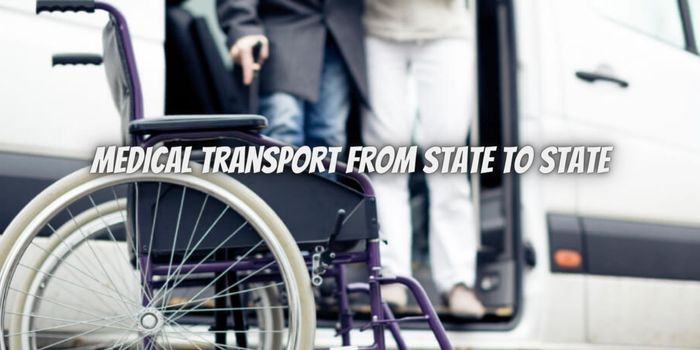Perhaps you’re considering an interstate (state-to-state) move for your loved one requiring medical care. Thanks to the availability of equipment needed for medical transport and service providers ready to help, it is possible.
For instance, CienOne is widely known for providing non-emergency medical transport from state to state. The provider’s well-equipped medical fleet and professional care team help make every patient’s trip comfortable and safe -by tackling all the logistical details.
When health becomes a concern transcending borders, the need for reliable medical transport from state to state becomes critical in life’s challenging moments. This beacon of hope helps loved ones receive care despite the distance.
Intestate medical transport isn’t all about conveyance; it embodies the collective human effort to offer comfort and support. This post explores the possibilities and intricacies of state-to-state medical transport, shedding light on a critical service in healthcare accessibility across the US’s vast geographic expanses.
Options Available
Multiple options for interstate medical transportation are available. That being said, each option caters to specific health needs (depending on a doctor’s medical advice), a family’s preferences, the distance to be covered, and the situation’s urgency. Here’s a more insightful look at the various transport means facilitating state-to-state patient transfers.
1. Air Ambulance
This is an ideal choice for long-distance medical transfers, especially when time is the most crucial factor – as would be the case for a critically ill patient. Nonetheless, patients who prefer this option for shorter distances may opt for a helicopter, as it’s often more convenient.
Air ambulances provide all necessary medical care on board and sport-specialized equipment such as IV pumps and ventilators. Also, a team of healthcare professionals accompany the patient, helping deal with an emergency that may arise in transit.
Nonetheless, this is the costliest mode of medical transport from state to state. As such, it may require special insurance coverage if the patient doesn’t intend to pay out of pocket.
2. Ground Transport
A provider may use a ground ambulance or local transfers between two cities. Unlike conventional means of transport, medical transport vans sport specialized features like stretchers and wheelchair lifts.
Depending on the patient’s condition, they may include additional features such as oxygen tanks, monitors, and other necessary medical equipment. The idea is to ensure a seamless patient experience throughout the journey.
It’s also not uncommon for ground ambulances to comprise a transport team – including two drivers and an experienced paramedic or nurse, although this varies from provider to provider. Some providers also allow family members or pets to accompany the patient, depending on their wishes or doctor’s recommendations.
Service providers also impose a minimum distance requirement for ground transport to be a viable option. For instance, some providers have a 200-mile requirement, while others accept only long-distance requests (over 300 miles).
Since ground transport is usually slower than an air ambulance, it’s mostly applicable to non-emergency cases. These include patients seeking medical follow-up, therapy sessions, treatment only available across state lines, or following a hospital discharge.
3. Medical Escort
In some cases, a medical escort may accompany the patient when they travel by air, using a commercial airline. Case in point, if a patient has minor health issues such as diabetes, they may need a professional as a reassuring presence or to help monitor their condition while aboard a plane.
The attendant helps the patient throughout the journey, including ensuring proper dosage and administration of medications. This option is also applicable if an air ambulance is out of the equation, provided the patient meets the air medical escort service criteria – the patient is fit to fly.
How Service Providers Help
Long-distance travel is often challenging, even for healthy individuals; it can be a lot more demanding for those with medical needs. With that in mind, how do service providers provide safe and efficient interstate medical transport?
Well, they generally start by getting a clear picture of the patient’s health status or issues from the relevant parties – their family members or medical team. They also take into account the patient’s wishes. Then, they coordinate with the state’s Department of Health to get necessary permits required for transport – if necessary.
Additionally, they create trip plans and consider the best route, distance, duration, travel option, and the patient’s comfort. After that, they assign a professional crew, equip the vehicle (airplane or ground ambulance), and make the necessary arrangements for transfer. They also keep family members or caregivers in the loop by providing regular or real-time updates throughout the trip – if required.
In short, medical transportation across state lines hinges upon thorough planning and coordination. It’s also advisable to research the different options before deciding on a particular service and provider.




